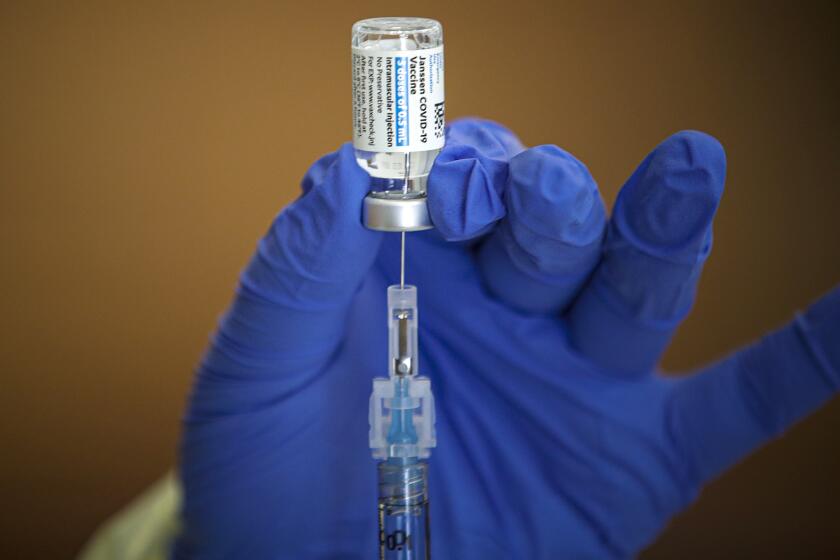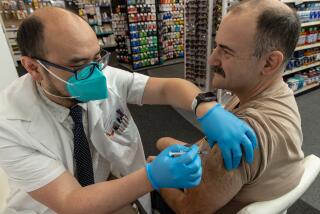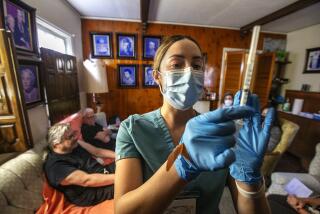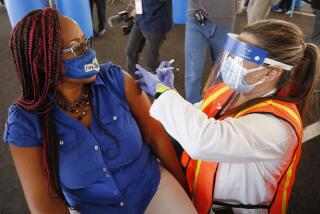Suddenly, L.A. County has more vaccine than people who want it. Why experts are alarmed
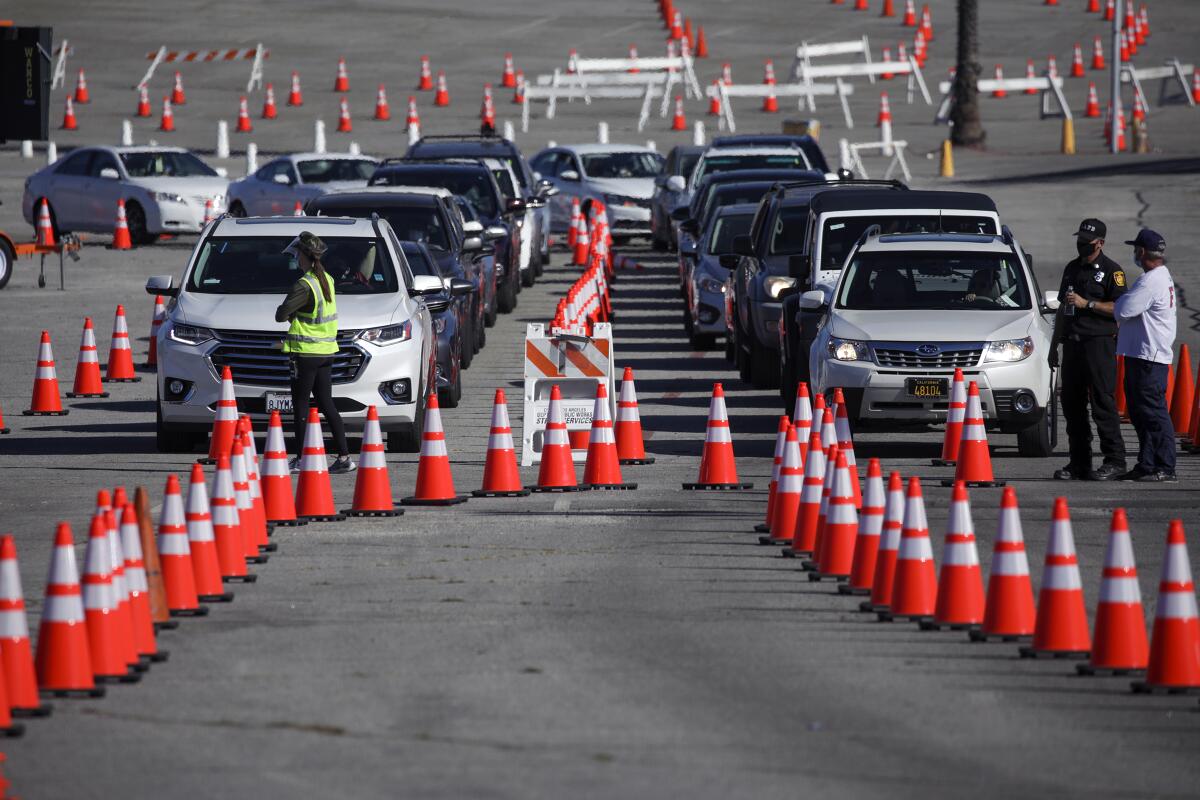
- Share via
Los Angeles County is set to hit a milestone in COVID-19 vaccinations that no one is happy about.
For the first time, the county will not reach its goal of administering 95% of its weekly supply, officials said this week. The reason: Appointments for the first dose of the COVID-19 vaccine have decreased by about 50%.
When the vaccine first became available, people clamored to get it, sometime cutting lines and going to other counties.
What happened? Here is what we know:
First-dose appointments decreased by about 50%, which could mean that the county will not reach its goal of administering 95% of its supply over a seven-day period.
Why the sudden fall in demand?
Officials are not completely sure.
“I do know that across the county this past week we saw much fewer people coming in to get vaccinated. For the first time ever, we’ve had appointments at many vaccination sites that have not been filled,” said L.A. County Public Health Director Barbara Ferrer during a news briefing Thursday.
Health experts and officials have attributed the drop to a variety of reasons, including ongoing hesitancy around the vaccine and access issues.
In another sign of slowing demand for the COVID-19 vaccine, Los Angeles city officials announced on Friday that the mass vaccination site at Dodger Stadium — one of the largest in the country — will cease operations by the end of May as part of a major shift to increase appointment-free vaccine availability at other city-run sites.
Deputy Mayor Jeff Gorell said the city has also seen a significant drop in bookings of appointments at city-run clinics, and that closing Dodger Stadium will allow expanding access and availability at other city sites. Officials hope the new system will give people who are unable to set a specific appointment time — due to work schedules, internet access or other obstacle — more flexibility to get a shot.
“The process that will allow us to demobilize Dodger Stadium will allow us to maintain vaccine capacity and spread it out citywide,” Gorell said.
Countywide, officials said about 18% of residents have missed their second-dose appointments. Demand has also dropped across the state and the country.
What is being done?
The decline in demand has prompted the county to shift to more walk-in vaccination sites, rather than requiring appointments, at least through next week and likely beyond.
The city of Los Angeles will begin to transition its vaccine clinics to an appointment-free system on Friday and Saturday, starting with sites at Pierce College in Woodland Hills and in Lincoln Park. Cal State Los Angeles, Southwest College, USC, San Fernando Park and the 10 city-run mobile sites will follow suit next week as the drive-through site at Dodger Stadium winds down operations.
Residents will still be able to make appointments and keep existing appointments, and expeditors will continue to help those who do. But an appointment slot will no longer be required.
Where do we stand with vaccinations?
Millions of people remain unvaccinated in the county. Only about 45% of residents have been partially vaccinated, according to a Times analysis, and more than 30% have been fully inoculated. To date, more than 7.2 million doses — including 2.6 million second shots — have been administered in the county.
Statewide, nearly 30 million doses have been administered statewide, according to data from the Centers for Disease Control and Prevention. And 48.2% of Californians to date have received at least one vaccine dose and 29.9% are considered fully vaccinated.
While transmission, hospitalizations and deaths related to COVID-19 remain low throughout the state and in L.A. County, health experts have said that ongoing vaccinations continue to be key in the fight against the virus. But a vaccination rate of 100% is unlikely, experts have said, and getting the remainder of unvaccinated eligible residents to get a shot could take some time. That, combined with children who are not yet eligible for a shot, is a substantial amount of the population, experts have said.
More to Read
Sign up for Essential California
The most important California stories and recommendations in your inbox every morning.
You may occasionally receive promotional content from the Los Angeles Times.
